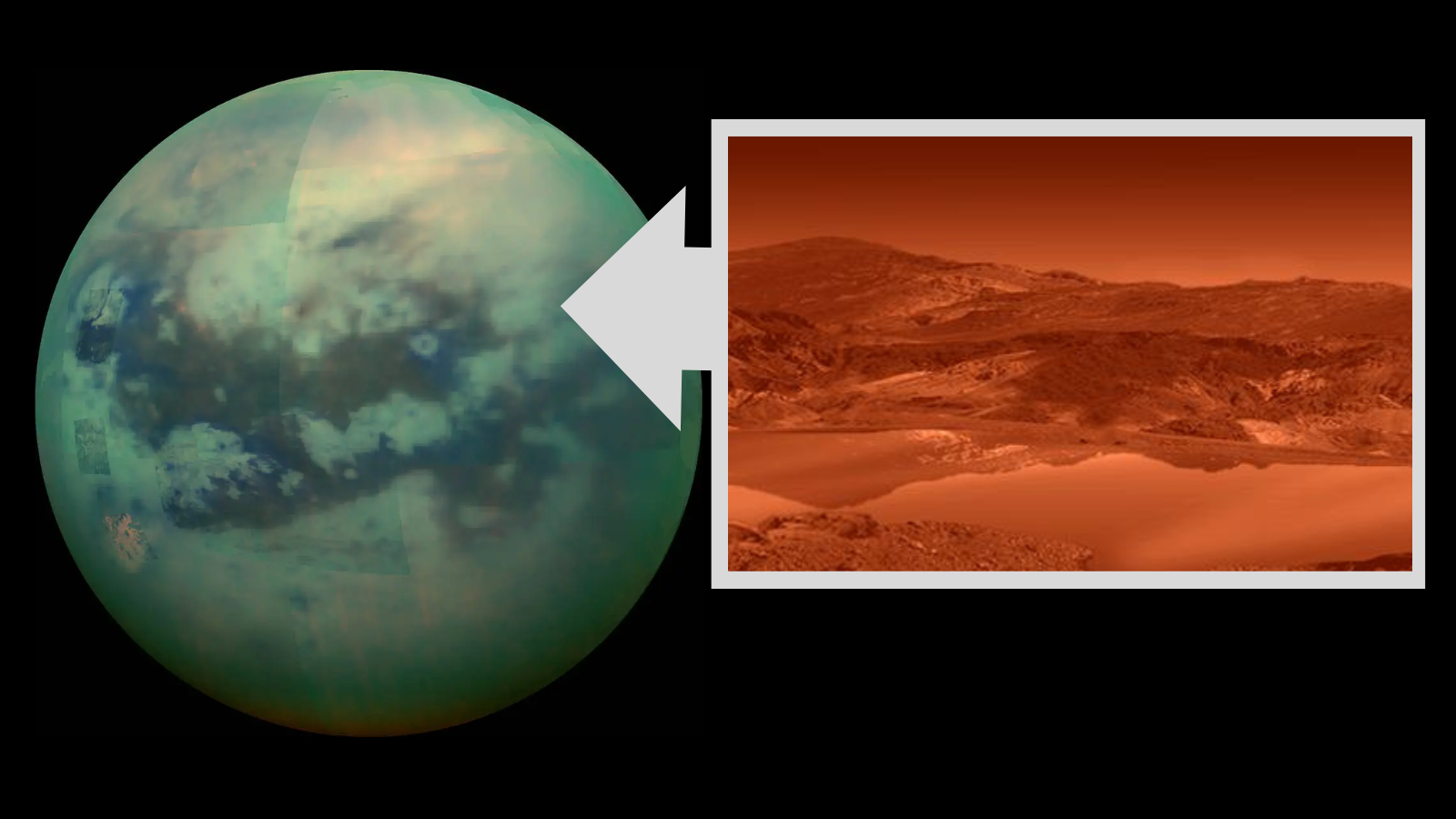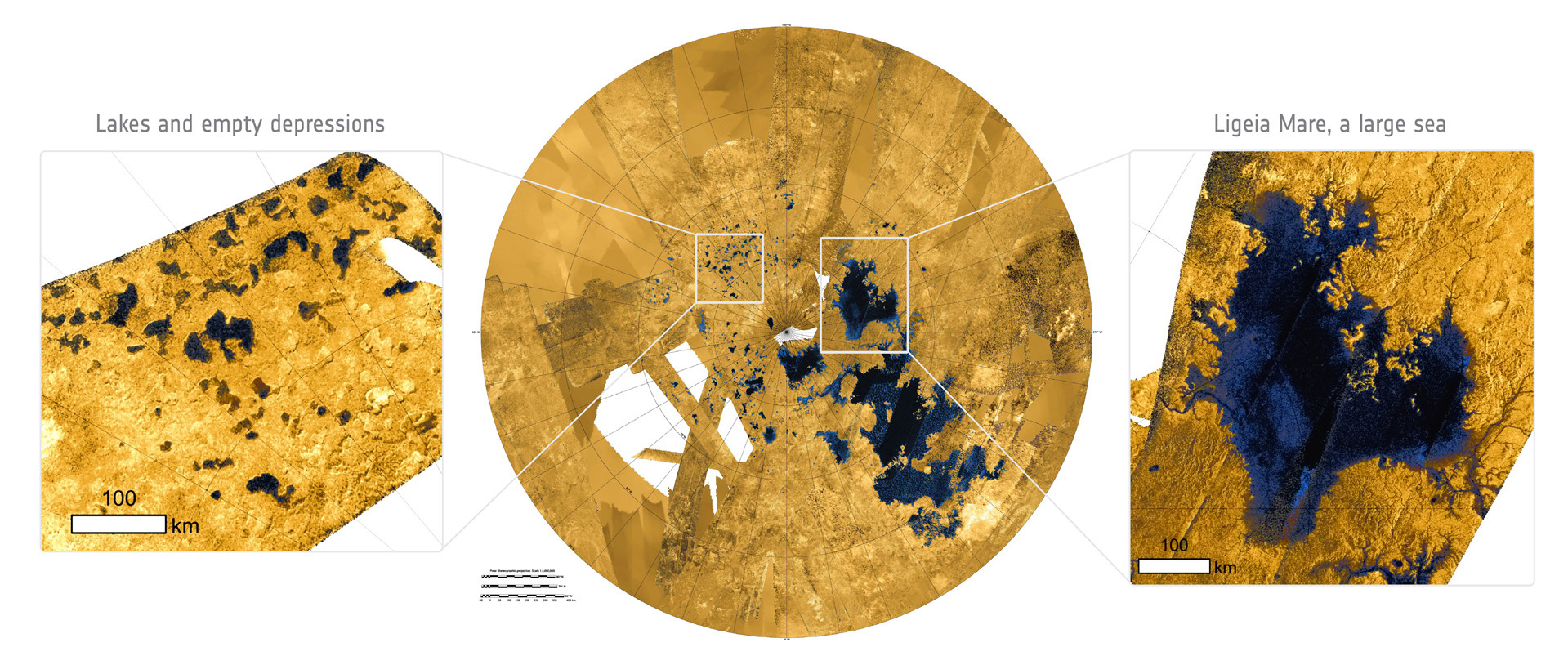
The floating "magic islands" of Saturn's largest moon, Titan, may finally have a scientific explanation. Scientists believe they're clumps of glacier-like snow shaped like honeycomb.
The so-called islands were first spotted in 2014 by the Cassini-Huygens spacecraft as it peered through the orange haze surrounding Titan, which is a moon that's bigger than the planet Mercury. Appearing as shifting bright spots on the Saturnian moon above lakes of liquid methane and ethane, the islands left scientists struggling for an explanation. No one could figure out how these ephemeral blocks could appear, then simply disappear, from observation to observation.
However, new research led by Xinting Yu, an assistant professor at the University of Texas San Antonio's Department of Physics and Astronomy, suggests these magic islands are actually floating chunks of porous, frozen organic solids in shaped not unlike those of honeycomb or Swiss cheese. Presumably, the solids accumulate after snowing from the sky of Titan.
"I wanted to investigate whether the magic islands could actually be organics floating on the surface, like pumice that can float on water here on Earth before finally sinking," Yu said in a statement.
Related: Nuclear-powered Dragonfly mission to Saturn moon Titan delayed until 2028, NASA says
The magical islands of Titan are real after all
Theories developed to explain the magical islands of Titan have been divided into two rough categories. On one hand, there are those which suggest the islands are phantom-like; on the other, there are those that say they must be real, physical bodies.
In the phantom category are suggestions that the islands could be caused by waves in the moon's methane or ethane lakes, or perhaps even by chains of bubbles associated with fizzing materials beneath these bodies of liquid.
But Yu discovered the distinctly non-phantom nature of Titan's magical islands when she decided to take a closer look at how the moon's atmosphere, which is 50% thicker than Earth's as well as rich in methane and other organic molecules, relates to its liquid lakes and dark dunes of organic material across its surface.
The upper atmosphere of Titan is dense with organic molecules that are capable of clumping together, freezing, then snowing onto the moon's surface and into the calm rivers and lakes of methane and ethane that punctuate this alien vista.
To see if this could account for magic islands, the team first had to find out if the complex organic molecules "snow" of Titan would immediately dissolve as soon as it hit the liquid lakes and rivers. The researchers determined that, because these liquid bodies are already packed or "saturated" with organic molecules, this dissolution couldn't happen.
The next question that Yu wanted to answer was: What happens to these clumps once they hit these bodies of liquid? Would they sink or float?
"For us to see the magic islands, they can’t just float for a second and then sink. They have to float for some time, but not for forever, either," Yu said.

At first glance, models of Titan seem to suggest the immediate sinking of solids. Ethane and methane in the liquid regions of Titan's surface would have low surface tension, and the frozen solids would have high density. This implies these frozen materials wouldn't float long enough to be mistaken for islands, magical or otherwise.
Yet, the team says, there is a mechanism that would allow these snows to float on methane or ethane liquid lakes.
If the snow clumps were large enough and porous like Swiss cheese, the hollow holes and tubes would allow them to float until methane or ethane seeps within, filling the voids and causing them to sink.
The model developed by Yu and her colleagues suggested that individual snow clumps would be too small to let this happen, but if enough of this snow massed together on the lakeside shores of Titan, large pieces could break off and drop away and float on methane/ethene lakes.
This is similar to how sheets of ice break away from glaciers on Earth and float into seas, a process called "calving."
Yu and her fellow researchers also offered an explanation for another mystery on Titan: why its bodies of liquids are so peaceful with waves no larger than around a few millimeters.
She and the team determined that this is because the surfaces of these liquid bodies are coated by a fine floating blanket of frozen solids that grants them their smoothness.
The team's research was published Thursday (Jan. 4) in the journal Geophysical Research Letters.







